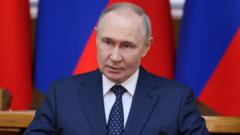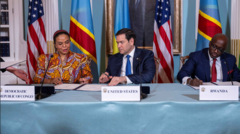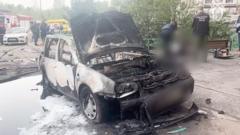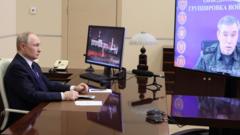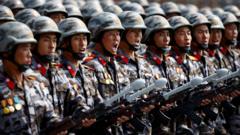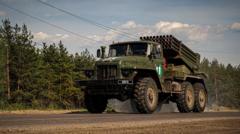The ceasefire, set from May 8 to May 11, is positioned as a humanitarian gesture, but historical patterns of failed truces raise questions about its effectiveness.
**Putin Declares Temporary Ceasefire in Ukraine for Victory Day Observances**
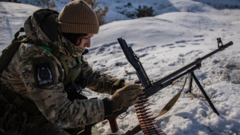
**Putin Declares Temporary Ceasefire in Ukraine for Victory Day Observances**
Russian President announces a three-day ceasefire amidst ongoing tensions in the Ukraine conflict, coinciding with WWII victory celebrations.
During a recent announcement, Russian President Vladimir Putin declared a temporary ceasefire in the ongoing conflict in Ukraine. According to the Kremlin, this ceasefire will take effect from the morning of May 8 and extend until May 11, strategically aligning with victory celebrations commemorating the end of World War II.
The Kremlin characterized the ceasefire as being "based on humanitarian considerations." It urged that Ukraine should emulate this gesture, emphasizing that any violations of the ceasefire by Ukraine would require an "adequate and effective response" from the Armed Forces of the Russian Federation. Additionally, the statement reiterated Russia's willingness to engage in peace talks without preconditions, aimed at addressing the fundamental issues generating the Ukrainian crisis.
Despite previous attempts at ceasefires—more than 20 of which have ultimately failed—this announcement follows a 30-hour truce enacted over the Easter holiday, where both sides noticed a decrease in hostilities but accused each other of numerous violations.
The backdrop of this ceasefire comes amidst a "very critical" week for Russia-Ukraine peace negotiations, as described by US officials. The United States has been striving to mediate a resolution between the conflicting parties. However, indications that the Trump administration might withdraw its efforts unless substantial progress is observed add complexity to an already tenuous situation.
The ceasefire may reflect Putin’s desire to showcase Russia's commitment to peace talks, especially in light of President Trump's comments indicating frustration with Russia's military actions against Ukraine. Since Russia's full-scale invasion of Ukraine on February 24, 2022, the nation has maintained control of approximately 20% of Ukrainian territory, including the Crimea peninsula, annexed in 2014. The ongoing conflict has resulted in a staggering number of casualties, predominantly among military personnel from both sides.
The Kremlin characterized the ceasefire as being "based on humanitarian considerations." It urged that Ukraine should emulate this gesture, emphasizing that any violations of the ceasefire by Ukraine would require an "adequate and effective response" from the Armed Forces of the Russian Federation. Additionally, the statement reiterated Russia's willingness to engage in peace talks without preconditions, aimed at addressing the fundamental issues generating the Ukrainian crisis.
Despite previous attempts at ceasefires—more than 20 of which have ultimately failed—this announcement follows a 30-hour truce enacted over the Easter holiday, where both sides noticed a decrease in hostilities but accused each other of numerous violations.
The backdrop of this ceasefire comes amidst a "very critical" week for Russia-Ukraine peace negotiations, as described by US officials. The United States has been striving to mediate a resolution between the conflicting parties. However, indications that the Trump administration might withdraw its efforts unless substantial progress is observed add complexity to an already tenuous situation.
The ceasefire may reflect Putin’s desire to showcase Russia's commitment to peace talks, especially in light of President Trump's comments indicating frustration with Russia's military actions against Ukraine. Since Russia's full-scale invasion of Ukraine on February 24, 2022, the nation has maintained control of approximately 20% of Ukrainian territory, including the Crimea peninsula, annexed in 2014. The ongoing conflict has resulted in a staggering number of casualties, predominantly among military personnel from both sides.

